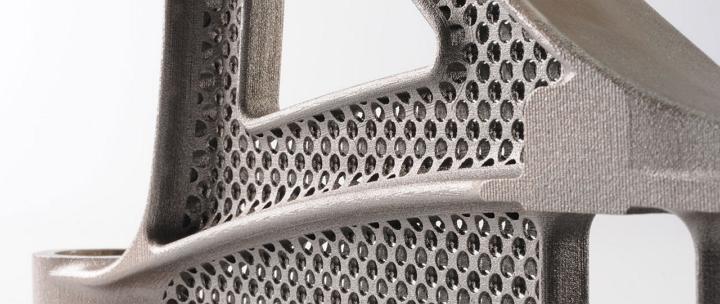 It’s intended to aid in the production of hollow parts, the sort which are constructed using mandrel or clamshell molding, and ExOne says they’ve qualified a new application for their additive manufacturing process they call Water Wash-out Tooling.
It’s intended to aid in the production of hollow parts, the sort which are constructed using mandrel or clamshell molding, and ExOne says they’ve qualified a new application for their additive manufacturing process they call Water Wash-out Tooling.
Mandrels with specialized reinforcement materials can be heated above transition temperature, inflated inside a clamshell mold, and then cooled until they hold their new shape. A composite part is then laid up on the resulting molded mandrel tool.
Developed at the company’s Materials Applications Laboratory – or ExMAL – the process identified the limitations of traditional manufacturing techniques for tooling production with water soluble materials. This latest application was developed to take on the creation of varying designs of composite parts.
 With ExOne printers, the company created 3D printed “cores” which can easily be washed out of a part following the manufacturing process, and in fine tuning the application, ExMAL developed a surface coating process applied to the printed core which eliminates the porousness of printed media. The technique ultimately provides extremely smooth surface finishes.
With ExOne printers, the company created 3D printed “cores” which can easily be washed out of a part following the manufacturing process, and in fine tuning the application, ExMAL developed a surface coating process applied to the printed core which eliminates the porousness of printed media. The technique ultimately provides extremely smooth surface finishes.
Rick Lucas, the Chief Technology Officer at ExOne, says his company continues to qualify and refine applications and materials for industrial 3D printing. He says the systems allow customers to directly print not only parts, but the tooling required as well.
“This new Water Wash-out Tooling process is unique when compared with traditional methods in that all of the print material can be recovered and reused for future print cycles,” Lucas said. “It reduces inventory requirements and removes molding steps to help speed up development time.”
The process is largely aimed at producing hollow parts, and it involves 3D printing a core in sand, ceramics, or carbon and applying a composite lay-up before curing. The final core is then washed out to leave the structural composite alone.
It’s a “dimensionally stable” process which provides manufacturers with prototyping for part evaluation. Lucas says the process can be used with Polyester, Vinyl Ester or Epoxy resins, and the system can operate at autoclave pressures up to 125 psi and can withstand process temperatures to 375 degrees Fahrenheit.
Lucas says Water Wash-out Tooling is ideally suited for printing mandrels for filament winding, plugs and source tools, styling and design models, hollow or trapped shape fabrication and for the production of one-off parts for validation.
 Can you imagine applications for what ExOne are calling Water Wash-out Tooling? Let us know in the Water Wash-out Tooling forum thread on 3DPB.com.
Can you imagine applications for what ExOne are calling Water Wash-out Tooling? Let us know in the Water Wash-out Tooling forum thread on 3DPB.com.
Subscribe to Our Email Newsletter
Stay up-to-date on all the latest news from the 3D printing industry and receive information and offers from third party vendors.
You May Also Like
Boom Supersonic Test Flies Demonstrator Aircraft
Boom Supersonic hopes to revolutionize air travel by reintroducing supersonic passenger flights. The company has amassed over $700 million in funding, with notable contributions from entities like Japan Airlines, and...
Conglomerates Are Auctioning GE Metal 3D Printers and More
As the additive manufacturing (AM) industry continues to slough through its economic downturn, we’ve seen not only smaller firms like Uniformity Labs and Arevo go belly up, but larger entities restructuring in...
Interview: GE Additive Provides Series 3 Metal Binder Jet Update
For another year running, I survived the bustling insanity that is formnext. With a reported 859 exhibitors, 196 speakers, 32,851 visitors (50% international), and 54,000 m² of exhibition space, Europe’s...
Del Toro’s Pinocchio Achieves Stop-Motion First with Metal 3D Printed Metal Puppets
Did you know that the stop-motion puppetry featured in Guillermo del Toro’s 2022 film Pinocchio was accomplished through the use of metal 3D printing? Our story begins in the year...





























